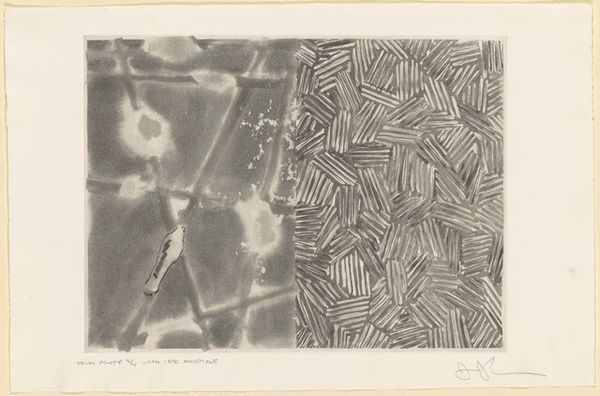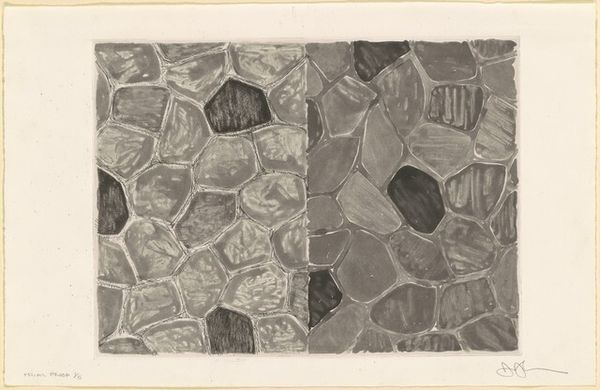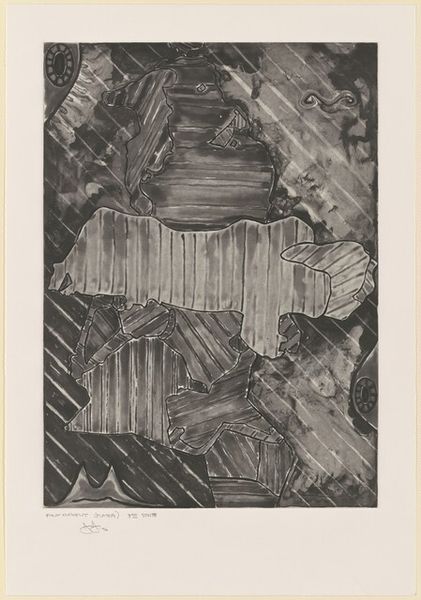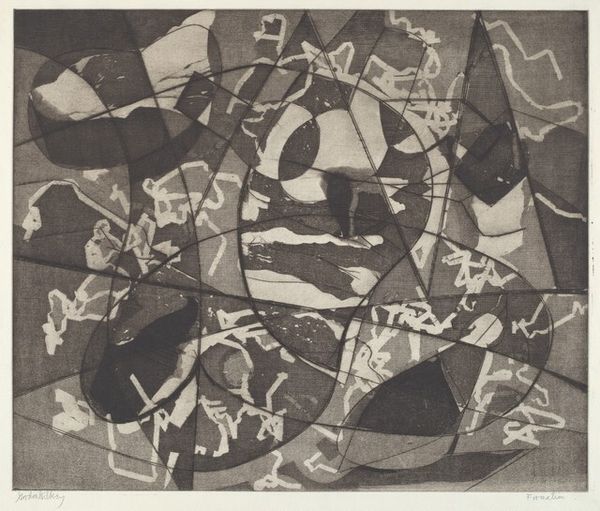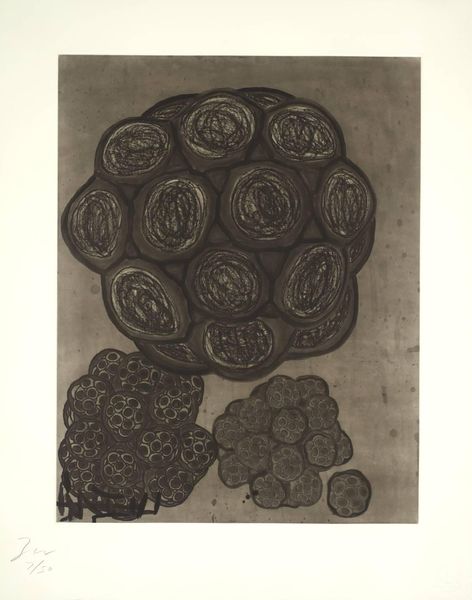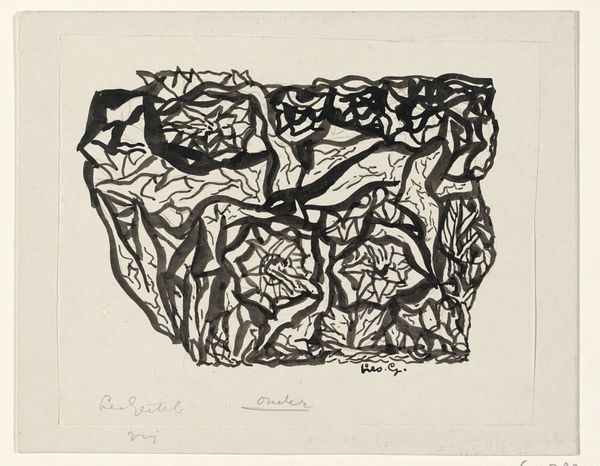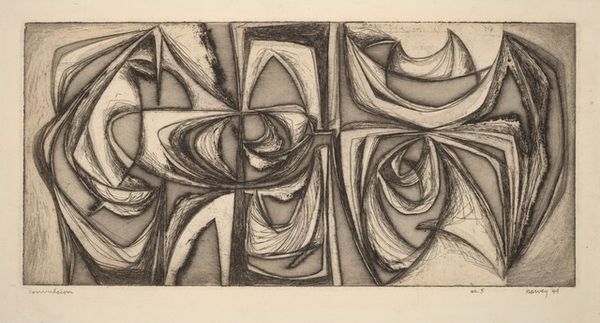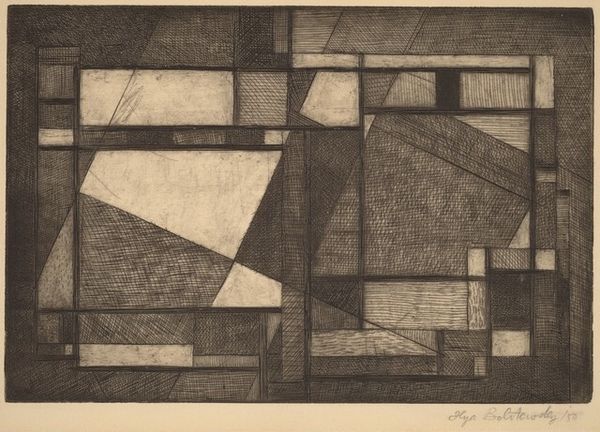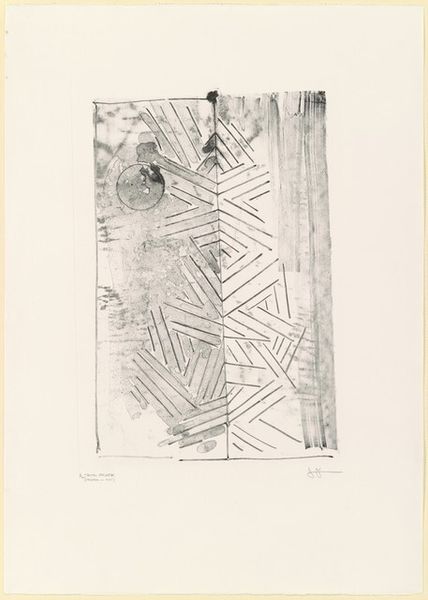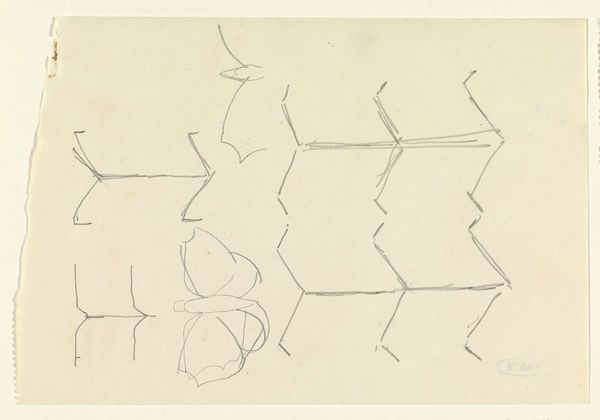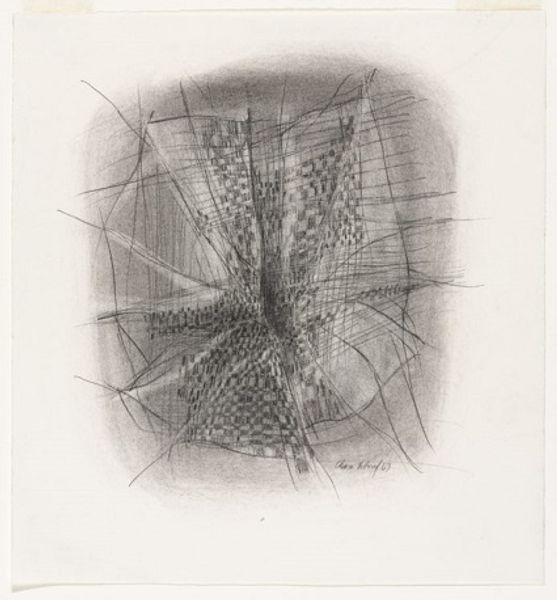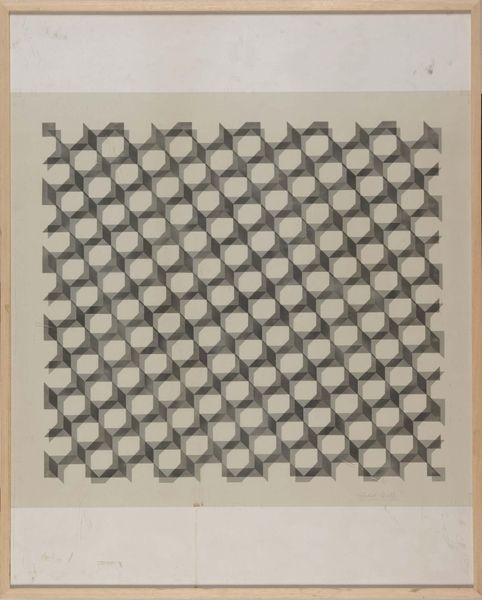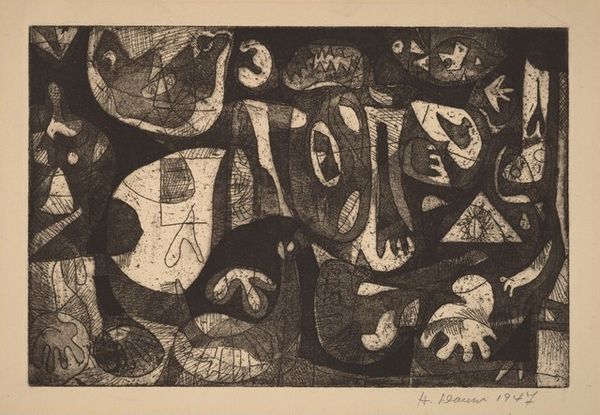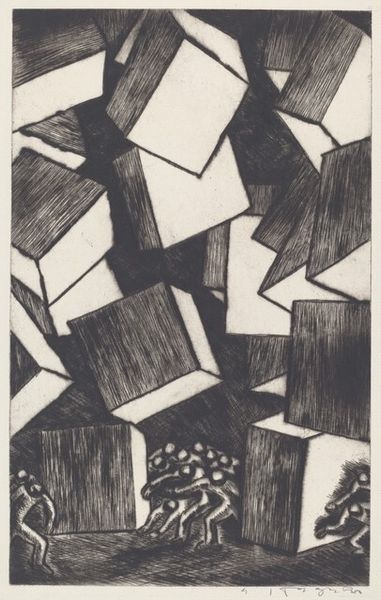![Flagstones and Flagstones [trial proof 4/5] by Jasper Johns](/_next/image?url=https%3A%2F%2Fd2w8kbdekdi1gv.cloudfront.net%2FeyJidWNrZXQiOiAiYXJ0ZXJhLWltYWdlcy1idWNrZXQiLCAia2V5IjogImFydHdvcmtzLzJmMDUwMjBkLTk0ZGYtNGQyOS04MDVlLTlkNjljYmFjZGZiZC8yZjA1MDIwZC05NGRmLTRkMjktODA1ZS05ZDY5Y2JhY2RmYmRfZnVsbC5qcGciLCAiZWRpdHMiOiB7InJlc2l6ZSI6IHsid2lkdGgiOiAxOTIwLCAiaGVpZ2h0IjogMTkyMCwgImZpdCI6ICJpbnNpZGUifX19&w=1920&q=75)
#
neo-dada
Dimensions: plate: 26.99 x 36.2 cm (10 5/8 x 14 1/4 in.) sheet: 32.39 x 49.85 cm (12 3/4 x 19 5/8 in.)
Copyright: National Gallery of Art: CC0 1.0
Curator: Jasper Johns' "Flagstones and Flagstones," a print made in 1976, confronts us with an interesting duality. What’s your immediate reaction? Editor: Well, immediately it feels stark, almost severe. The division into two distinct halves really emphasizes the texture and the contrast in the tones. It makes me want to understand the "how" of its making. Curator: It's striking, isn’t it? Thinking about Johns, it makes me consider the gendered dimensions of labor. Here's an artist who achieved superstar status re-creating something as everyday as paving stones. Whose hands laid those original stones? What was their social standing, their compensation? Editor: Exactly! And this being a print, we have to ask, what does the reproductive labor of printing reveal about Johns’ artistic practice here? How many impressions did he make? And what paper did he use? It’s all part of the larger material context. Curator: Precisely. By focusing on something mundane, Johns perhaps aims to flatten hierarchies within art itself. He elevates a "lowly" subject to high art status. The very act challenges the status quo. Editor: And the division itself encourages this exploration of the everyday. There’s such a marked contrast between the hatching on the left and the smoother textures on the right—two different modes of engagement with the same subject matter, implying perhaps, two different labor processes. Curator: That duality resonates deeply. He seems to question artistic convention while nodding to movements such as pop art with an appropriation of popular imagery. What can seem apolitical on the surface in reality addresses key political issues. Editor: I completely agree. Considering what a trial proof entails also adds another layer to this artwork. Here is John showcasing two ways he approached the material. It is far from being spontaneous: the medium and surface support planning, craft, skill. Curator: It underscores that the final 'art object' emerges through a specific matrix of social, historical, and, indeed, material relations. It asks us to interrogate what art is meant to represent and whose voices are centered in those representations. Editor: It pushes back on this illusion of spontaneity. Each deliberate stroke of the pencil contributes to our experience. Curator: Exactly! Editor: Considering that, I can now appreciate "Flagstones" in a way I would not have thought initially. Thanks for unveiling all these extra dimensions.
Comments
No comments
Be the first to comment and join the conversation on the ultimate creative platform.
